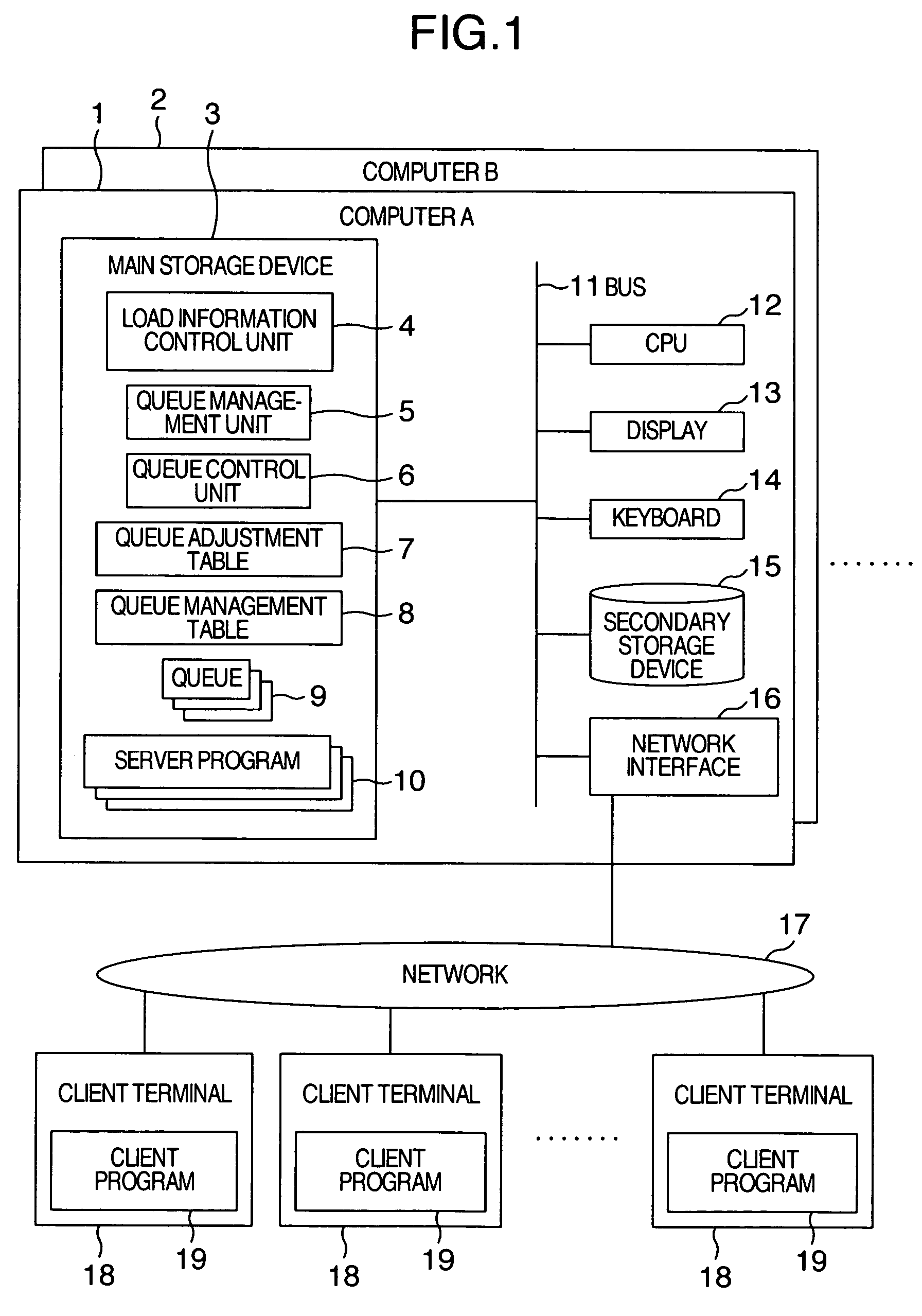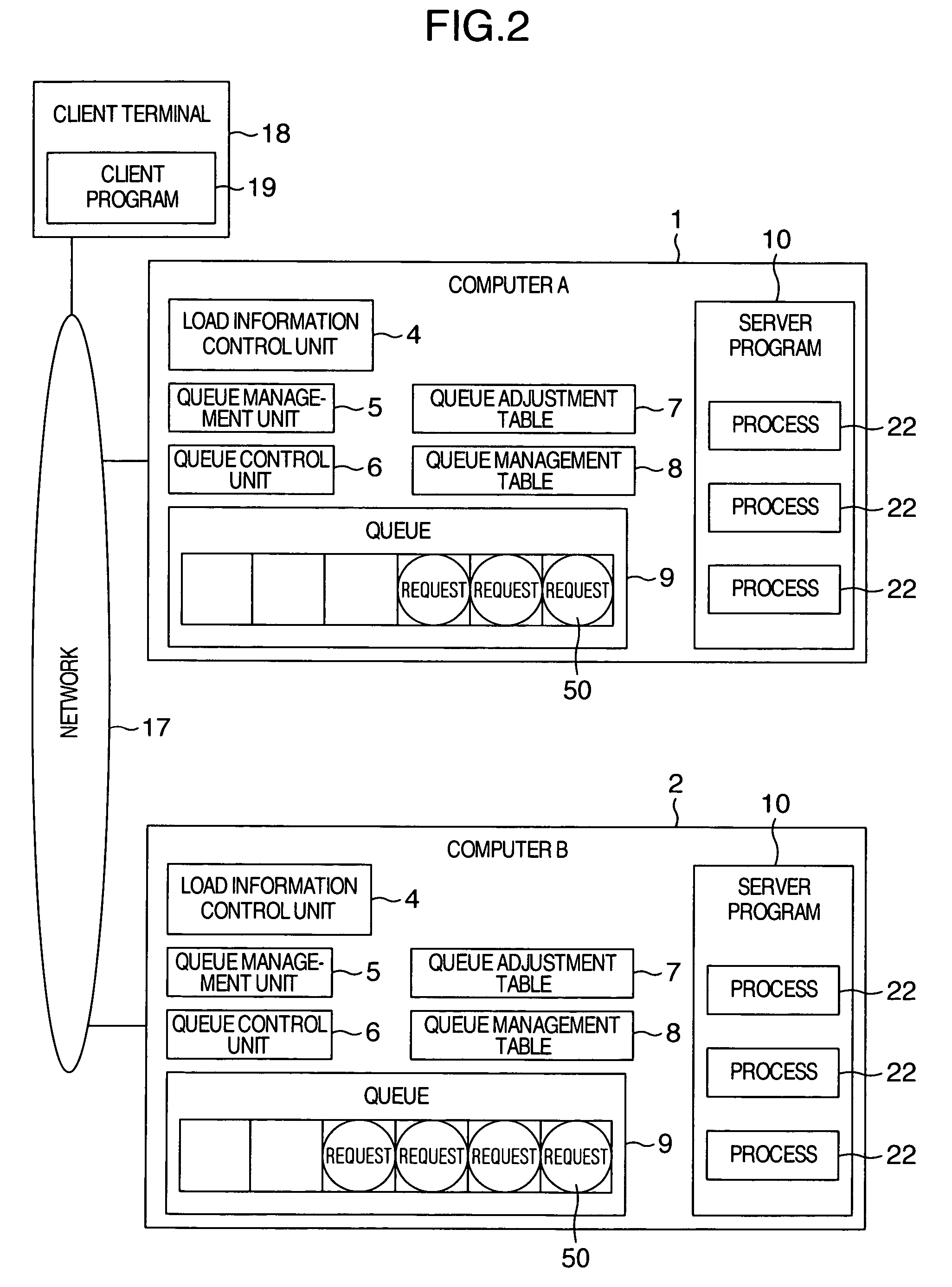Method and system for managing load balancing in data processing system
a data processing system and load balancing technology, applied in the direction of instruments, program control, multi-programming arrangements, etc., can solve the problems of not taking into account the delay of other processing, and the slowness of the client request time, so as to reduce the standard deviation of the response time of the client request.
- Summary
- Abstract
- Description
- Claims
- Application Information
AI Technical Summary
Benefits of technology
Problems solved by technology
Method used
Image
Examples
Embodiment Construction
[0020]A description will be directed to a dynamic queue load balancing system according to an embodiment of the present invention. The dynamic queue load balancing system of the present invention performs selective assignment of a processing request among queues of a plurality of computers, thereby dynamically performing load balancing.
[0021]FIG. 1 is a diagram showing a schematic configuration of the load balancing system in this embodiment. As shown in FIG. 1, a computer in this embodiment includes a load information control unit 4, a queue management unit 5, and a queue control unit 6.
[0022]The load information control unit 4 is a processing unit for exchanging information on the usage rate of each queue calculated through the use of a queue control table 8 among the computers through a network interface 16. The queue management unit 5 is a processing unit for performing selective assignment of a processing request according to the usage rate of each queue exchanged among the com...
PUM
 Login to View More
Login to View More Abstract
Description
Claims
Application Information
 Login to View More
Login to View More - R&D
- Intellectual Property
- Life Sciences
- Materials
- Tech Scout
- Unparalleled Data Quality
- Higher Quality Content
- 60% Fewer Hallucinations
Browse by: Latest US Patents, China's latest patents, Technical Efficacy Thesaurus, Application Domain, Technology Topic, Popular Technical Reports.
© 2025 PatSnap. All rights reserved.Legal|Privacy policy|Modern Slavery Act Transparency Statement|Sitemap|About US| Contact US: help@patsnap.com



